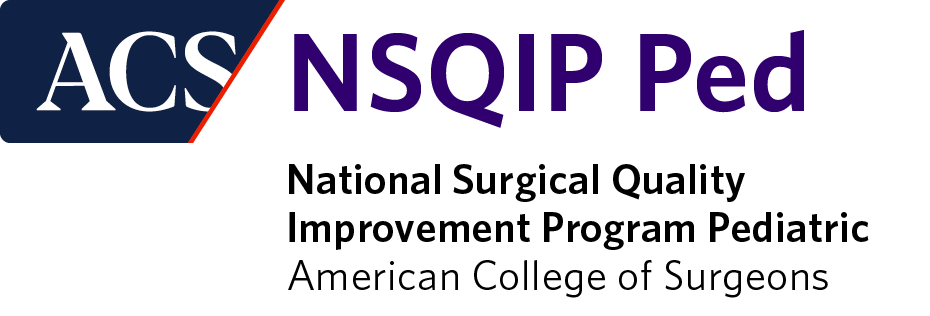Frequently Asked Questions
1) Who should use the ACS NSQIP Pediatric Risk Calculator? Is this just for surgeons?
The ACS NSQIP Pediatric Risk Calculator is designed to be used by surgeons, together with their patients and their families, to help provide information regarding the patient’s individual risks for surgery. There are parts of the risk calculator that might be hard for patients and their families to understand without their doctor. The risk calculator does provide a summary report, designed for patients and their families, that they can take home and share with other physicians and other individuals involved in their care.
2) How does the ACS NSQIP Pediatric Risk Calculator work?
The risk calculator uses patient predictors (e.g., age, ASA class, transfer status, wound classification) and the planned procedure (CPT code) to predict the chance that patients will have any of 12 different outcomes within 30-days following surgery.
3) What if I don’t know the answer to one of the patient predictors?
The risk calculator will provide the most precise risk information when all of the pre-operative predictor information is put in. However, if you do not know the answer to one of the fields, you can definitely leave it in the default setting (usually “No”). The model will estimate the risks based on the available information.
4) Why does the ACS NSQIP Pediatric Risk Calculator only provide risk predictions for the first 30-days after surgery?
The model used by the risk calculator is based on data from operations collected by hospitals participating in NSQIP Pediatric. The ACS NSQIP Pediatric program only collects data on complications for the first 30-days after surgery.
5) What if the patient has important risk factors that are not entered into the ACS NSQIP Pediatric Risk Calculator?
The surgeon can adjust the predicted risk using the “Surgeon Adjustment of Risk” button at the bottom right side of the results screen (Step 3 of 4). This should only be used if the surgeon feels that the patient has significant risk factors for surgery that are not already captured by the predictors that have been entered. This adjustment works by increasing the predicted risk for all outcomes by either 1 or 2 standard deviations.
6) Why aren’t all of the NSQIP Pediatric variables used for the Risk Calculator?
The Risk Calculator does not use every variable collected by NSQIP Pediatric to predict the risk of complications. In some cases, there will be overlap between the contributions of different variables to risk prediction; for example, the risk associated with operative indication may be mostly accounted for by the primary CPT code, wound class, etc. In other cases, the predictive ability of the included variables is so good that adding an additional variable for risk prediction does not significantly improve the ability of the risk calculator to predict risk. Finally, some variables may not be known to the surgeon at the time of informed consent and shared decision making.
7) Why does the ACS NSQIP Pediatric Risk Calculator not provide risk predictions for some common pediatric CPT codes?
The ACS NSQIP Pediatric focuses on lower volume, higher risk procedures in order to provide participating sites the most informative comparisons. Therefore, some of the common low risk, high volume procedures are not captured by NSQIP Pediatric and thus, are not included in the risk calculator.

